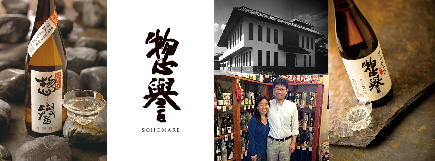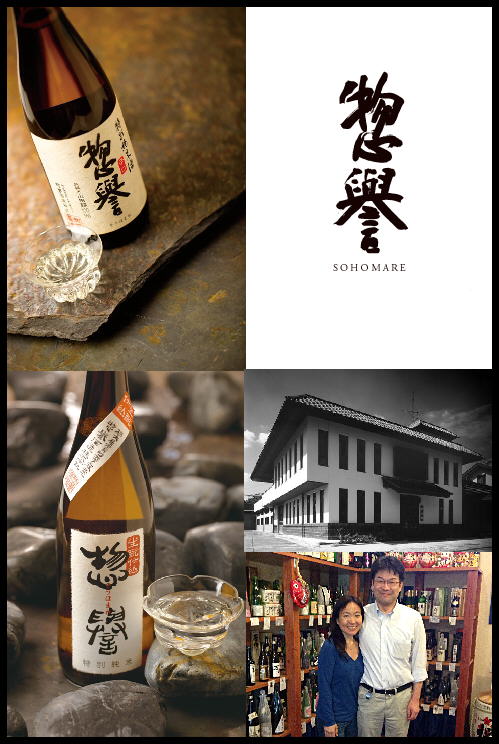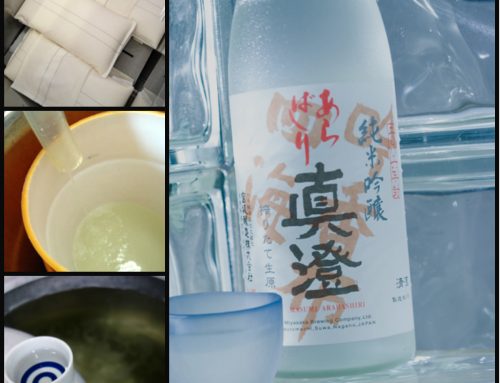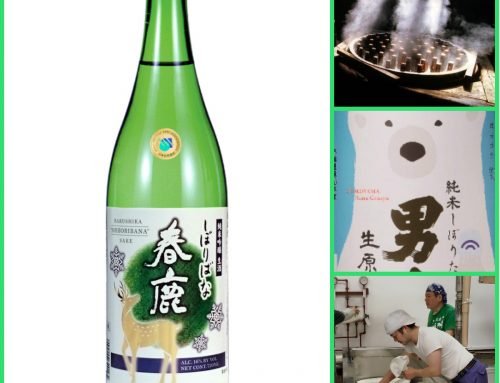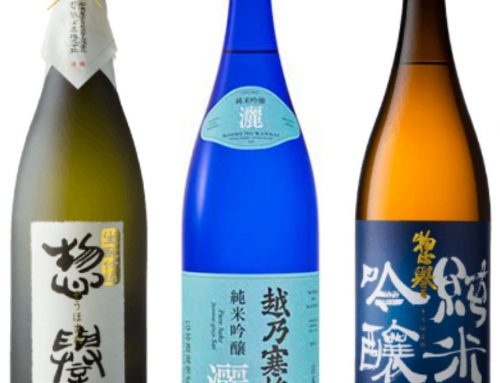Get ready for a really great sake tasting this Saturday! It is our pleasure to welcome Mr. Jun Kono to our shop from Sohomare Sake Brewery in Tochigi prefecture. He’ll be here in person to pour his sake and answer your questions. Mr. Kono is known for crafting contemporary Kimoto style sake, with rich yet elegant flavor. (To learn more about Mr. Kono and Kimoto style sake, check out the information we’ve posted to the right.)
Although the two incredible sake from Sohomare that we’ll be sampling this Saturday are more than enough reason for you to stop by, Mr. Kono has graciously agreed to allow us to sample other sake from other breweries as well. So in addition to Mr. Kono’s sake we’ll be sampling another five different sake for a total of SEVEN sake this Saturday!
Not sure what else we could do to make this tasting any better. Maybe some tigers and some flying monkeys? No promises on the circus animals for this Saturday, but we’ll certainly vouch for some delicious sake and interesting conversation!
SOHOMARE SAKE TASTING!
Saturday, March 01, 2014
3:00pm to 7:30pm
SOHOMARE KARAKUCHI
Premium Dry Sake
JUNMAI
**NEW TO HAWAII**
Brand new to Hawaii, this masterful interpretation of the “dry sake” genre is crystal clear and bracingly delicious. Made with Yamadanishiki rice, it has everything you look for in a junmai: flavor, clarity and impeccable structure. (Already had a sneak peek/taste of this and it was awesome!)
SOHOMARE TOKUBETSU KIMOTO
“Heart and Soul”
TOKUBETSU JUNMAI
Relatively new to Hawaii, this sake is a contemporary rendition of the ancient Kimoto style. Soulfully drinkable with plenty of acidity and ample umami – all in perfect harmony. Made with Yamadanishiki, Japan’s finest sake brewing rice.

DEWAZAKURA OKA YAMADANISHIKI
“Cherry Bouquet”
GINJO
Premium version of the classic “Oka” label brewed with Yamadanishiki rice. Soft, supple and fragrant, like a summer breeze wafting about the pear blossoms. If you’re already a fan of Dewazakura Oka, you’ll love this softer more elegant version.
DEWAZAKURA NAMA GENSHU
“Green Ridge – Primal Strength”
GINJO
This nama, or unpasteurized sake, delivers a noticeable lift at first sip, followed by a pleasant tartness and a brisk finish. Its lively taste stands up well to spicy foods. (This is the unpasteurized version of the popular Dewazakura Dewasansan.)
KAMOIZUMI JUNMAI DAIGINJO
“Autumn Elixir”
JUNMAI DAIGINJO
This is not your typical light and fruity Daiginjo. Possesses a full range of flavors, from persimmon to caramel to earthy notes of shiitake mushrooms and Autumn leaves. Tartness, sweetness and shibumi (astringency) all converge in harmonious balance.

TAMAGAWA KINSHO
“Heart of Gold”
DAIGINJO
Round and full flavored, with gamboling fruit and floral displays joined by riper fruit and grassy nuances. Glacial incrementations of flavor achieved by sub-zero temperature bottle aging impart both silky and viscosity in depth. Crafted by Philip Harper, the only foreign brewmaster in Japan!

KOKURYU JUNMAI GINJO
“Black Dragon”
JUNMAI GINJO
Kokuryu Junmai Ginjo has the imposing presence of sakes brewed in the Noto Toji style of Western Japan. Its deeply mysterious flavor seems to come from the earth itself: rich, dynamic and welcoming. One of our favorite sake to pair with food. Goes well with everything from sashimi to grilled meats!
Should be a fun one this Saturday, with Mr. Kono from Sohomare Sake Brewery on hand to pour his sake, and a total of SEVEN different sake to sample, sounds like one you won’t want to miss! Hope to see you then!
Kanpai,
Malcolm & Nadine Leong
The Sake Shop
SOHOMARE SAKE TASTING!
Saturday, March 01, 2014
3:00 pm to 7:30 pm

Sohomare Sake Brewery
Stop by the shop this Saturday and learn about the secrets of Kimoto sake making from Mr. Jun Kono, a leader of the “Kimoto renaissance” in Japan. He’ll be pouring his sake at the shop and answering your questions about his sake.

Mr. Jun Kono
Jun Kono, President of Sohomare Sake Brewing Company comes from an old sake brewing family with roots in Shikoku. During the Edo period they made sake in Shiga prefecture and then in 1872, moved to their current location in Tochigi prefecture.
In his early twenties he traveled to France, studying the language and visiting European wineries. Returning to Japan, he graduated from the prestigious Tokyo University, where he specialized in micro-economics. In 1989 he returned to Tochigi to take over brewery operations.

Nadine and Mr. Kono
Mr. Kono became fascinated by the traditional Kimoto brewing method, which since Edo times has produced rich, deeply flavorful sakes with strong character.

Sohomare Sake Brewery Workers
By using the best available Yamadanishiki rice, polished at the brewery itself, and by using precise brewing methods, Sohomare brought a new sense of elegance to the Kimoto sake category.
In recognition of it’s skill, in 2013 Sohomare Sake Brewery won the top award at the Kanto-Shinshu Regional Sake Judging of entries from 211 breweries in six prefectures, including Nagano and Niigata.

Kimoto Style Sake
Two of the sake we’ll be sampling this Saturday are “Kimoto” style sake from Sohomare. Often referred to as an old school method, what exactly does Kimoto mean?
Similar to the “Yamahai” method but older and much more laborious in nature, until the early 1900’s all sake was originally made using the Kimoto method.
The Kimoto method begins with the starter mash being “rammed” with wooden poles to form a puree. This back breaking technique helps to remove oxygen from the mixture which is necessary for the creation of lactic acid.
Lactic acid, originally created from natural lactic bacteria, is an important and necessary component in the beginning steps of making sake.
Later it was found that mashing the rice was unnecessary, and that the same result could be achieved by simply raising the temperature of the starter mash slightly. (Yamahai Method)
Even later a more efficient method was found, where pure lactic acid was poured directly into the tank as opposed to waiting for lactic bacteria to propagate on it’s own. Called the “Sokujo” method, it is now the modern standard for making sake.
As opposed to the “cleaner” flavors that are developed from the Sokujo method, Kimoto style sake tends to have a richer, more full bodied flavor. For those of you who are not into light fruity Daiginjos, a Kimoto style sake may be just what you’re looking for.

Yamadanishiki Sake Rice
(Picture Courtesy of Sake World)
Sake rice or “sakamai” plays a very important role in the making of sake, and can have a huge impact on the flavor profile of the finished product.
Breweries will purposely use different types of sake rice to achieve very specific and unique flavor profiles. While many other factors also contribute to the overall result (water, yeast, temperature, etc.) rice plays a very important role.
Some examples of the different sake rice that we’ll be tasting this Saturday include:
Yamadanishiki Rice
~ Dewazakura Oka Yamadanishiki
~ Kamoizumi Junmai Daiginjo
~ Sohomare Karakuchi
~ Sohomare Tokubetsu Junmai
~ Tamagawa Kinsho
Gohyakumangoku Rice
~ Kokuryu Junmai Ginjo
Dewasansan Rice
~ Dewazakura Dewasansan

Brown Rice / Milled Sake Rice
In our April 2013 Tasting Newsletter we talked about sake rice and how it is different from the table rice that we eat. Sake rice tends to have more starch, less protein and has more of it’s starches concentrated towards it’s center.

1461 S. King Street
Honolulu, HI 96814
Ph (808) 947-7253
Fax (808) 947-7254
sakeshophawaii@gmail.com
www.sakeshophawaii.com
Twitter @sakeshop
Facebook The Sake Shop
Map: maps.google.com/maps
Parking
Metered parking available on King Street, Kaheka Street & Liona Street. Pay lot located behind our building. $2 for 1/2 hour Monday – Friday until 6pm and Saturdays until 2pm. All other hours $2 for 5 hours (paybox). Enter from Liona Street. Unfortunately we are unable to validate parking.
Hours of Operation
10am to 8pm Mon – Sat
10am to 5pm Sun
